

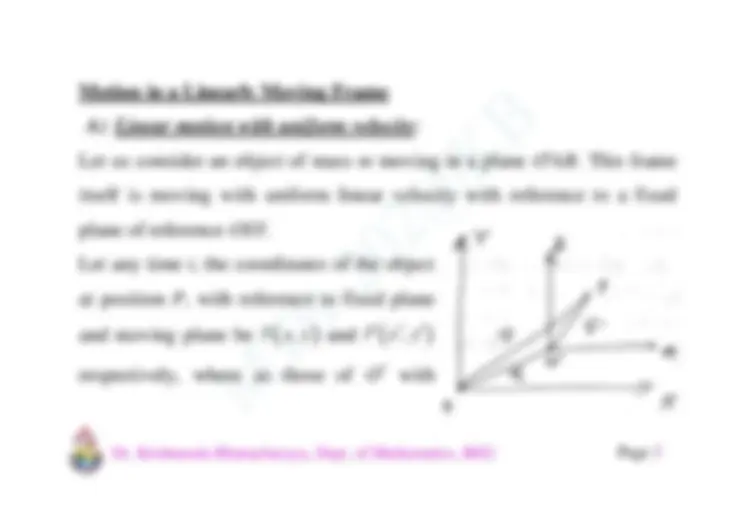
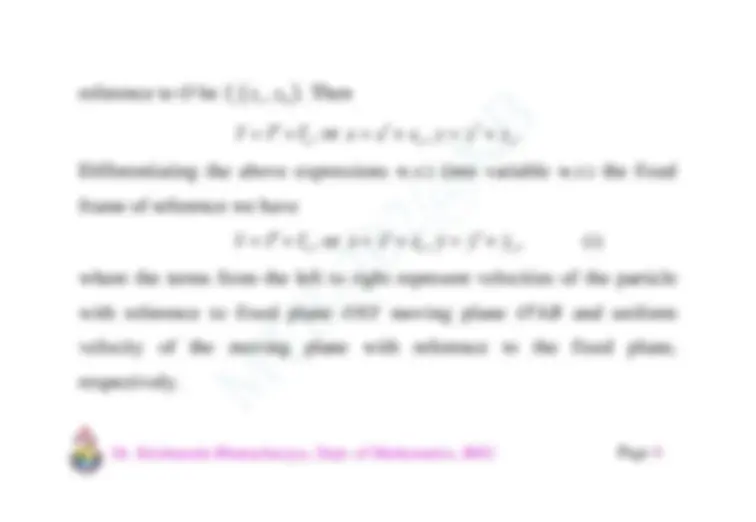
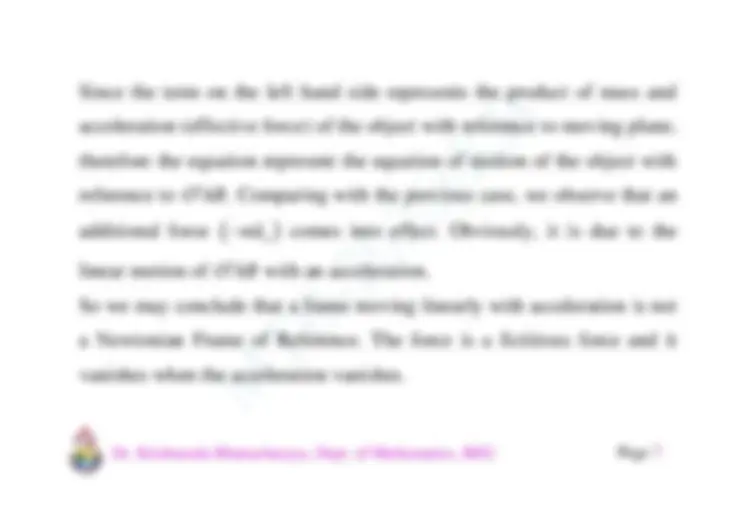
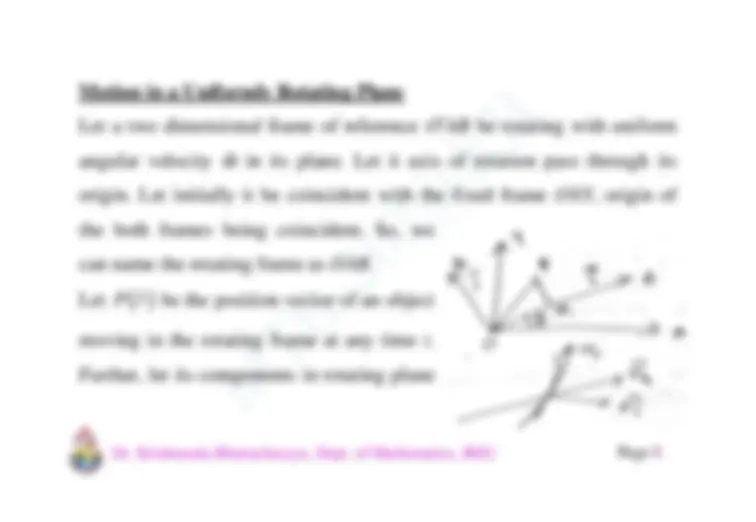
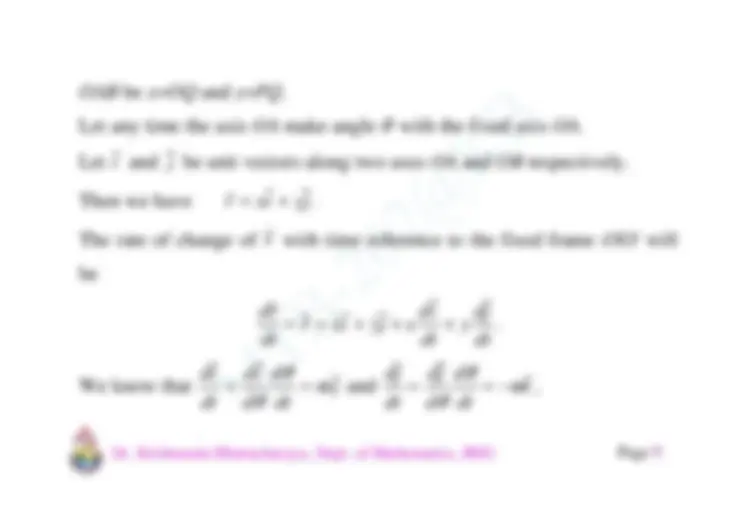
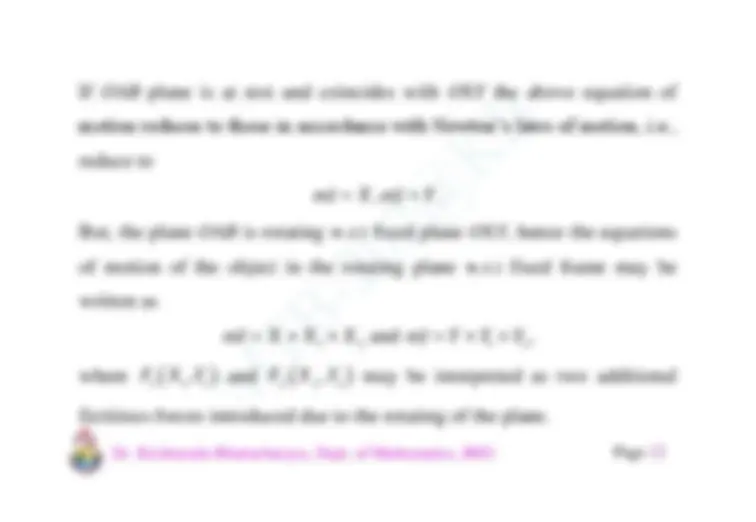
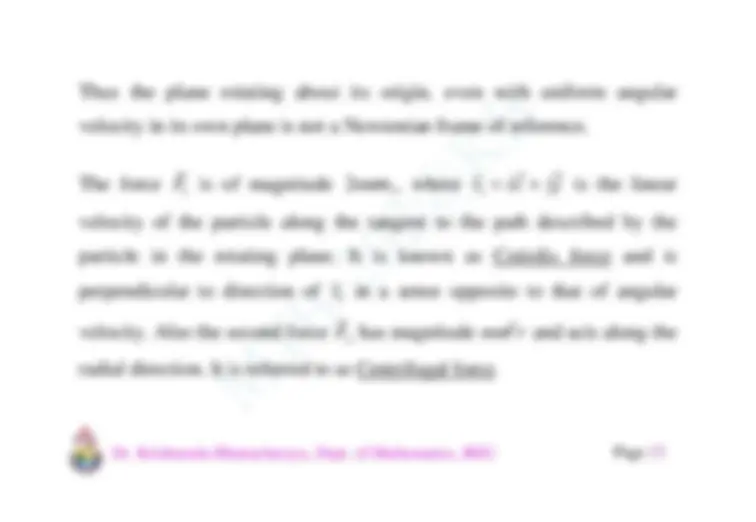



Study with the several resources on Docsity

Earn points by helping other students or get them with a premium plan


Prepare for your exams
Study with the several resources on Docsity

Earn points to download
Earn points by helping other students or get them with a premium plan
Community
Ask the community for help and clear up your study doubts
Discover the best universities in your country according to Docsity users
Free resources
Download our free guides on studying techniques, anxiety management strategies, and thesis advice from Docsity tutors
MADE WITH A VISION TO HELP THE FIRST YEAR STUDENT IN PREPARATION FOR THEIR EXAMS WITHOUT THE HASSLE OF WRITING THE CONTENT RELATED TO MOTION IN A MOVING FRAME IN ITS COMPLETE DETAILS ARE PROVIDED
Typology: Study notes
1 / 15

This page cannot be seen from the preview
Don't miss anything!










MTB 202 – Statics and Dynamics
by
Department of Mathematics, Institute of Science, Banaras Hindu University
Part – VII
Motion in a Linearly Moving Frame A) Linear motion with uniform velocity: Let us consider an object of mass m moving in a plane O AB . This frame itself is moving with uniform linear velocity with reference to a fixed plane of reference OXY. Let any time t , the coordinates of the object at position P , with reference to fixed plane and moving plane be r^ x y , and r^ ^ x^ ,^ y
respectively, where as those of O with
reference to O be ro (^) xo , y 0 . Then
r r ro^ , or^ x x ^ xo , y y yo.
Differentiating the above expressions w.r.t time variable w.r.t the fixed frame of reference we have v v vo , or x x ^ xo , y y yo , (i)
where the terms from the left to right represent velocities of the particle with reference to fixed plane OXY moving plane O AB and uniform velocity of the moving plane with reference to the fixed plane, respectively.
B) Linear Motion with an acceleration: Let the plane O AB be moving with an acceleration a with reference to the fixed plane. Then differentiating (i) w.r.t time (w.r.t fixed plane), we have a a ao , or x x ^ xo , y y y 0 ,
where first two terms from left to right represent the accelerations of the particle with reference to fixed plane and moving plane, respectively. So, the equation of motion of the object w.r.t the fixed plane is
ma F , i.e., ma F mao.
Since the term on the left hand side represents the product of mass and acceleration (effective force) of the object with reference to moving plane, therefore the equation represent the equation of motion of the object with reference to O AB . Comparing with the previous case, we observe that an additional force (^) mao comes into effect. Obviously, it is due to the
linear motion of O AB with an acceleration. So we may conclude that a frame moving linearly with acceleration is not a Newtonian Frame of Reference. The force is a fictitious force and it vanishes when the acceleration vanishes.
OAB be x = OQ and y = PQ.
Let i and j be unit vectors along two axes OA and OB respectively.
Then we have r xi yj.
The rate of change of r with time reference to the fixed frame OXY will be
drdt r xi yj x didt (^) ydjdt.
rotation and is the rate of change with respect to time variable w.r.t the fixed frame of the angular displacement of the rotating frame.
along OA and OB respectively, when observed from the fixed plane. Again differentiating w.r.t. t , the acceleration of the object with reference to the fixed frame will have the expression
If OAB plane is at rest and coincides with OXY the above equation of motion reduces to those in accordance with Newton’s laws of motion, i.e., reduce to mx X my , Y.
But, the plane OAB is rotating w.r.t fixed plane OXY , hence the equations of motion of the object in the rotating plane w.r.t fixed frame may be written as mx X X (^) 1 X 2 and my Y Y 1 (^) Y 2 ,
where F 1^ X^ 1 , Y 1 and F 2^ X^ 2 , Y 2 may be interpreted as two additional
fictitious forces introduced due to the rotating of the plane.
Thus the plane rotating about its origin, even with uniform angular velocity in its own plane is not a Newtonian frame of reference.
velocity of the particle along the tangent to the path described by the particle in the rotating plane. It is known as Coriolis force and is perpendicular to direction of v 1 in a sense opposite to that of angular
radial direction. It is referred to as Centrifugal force.